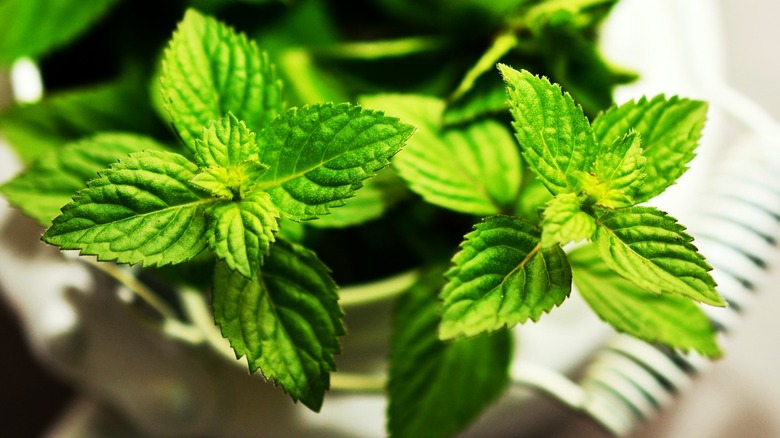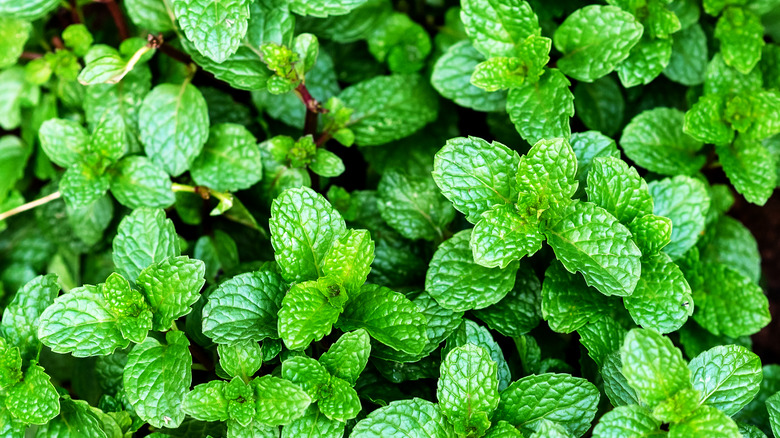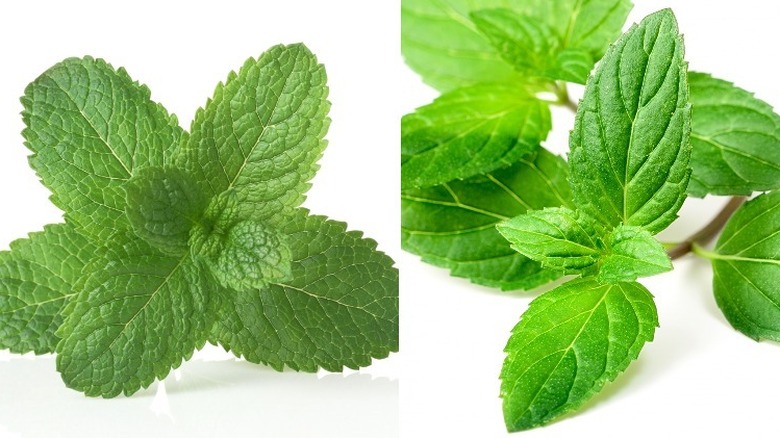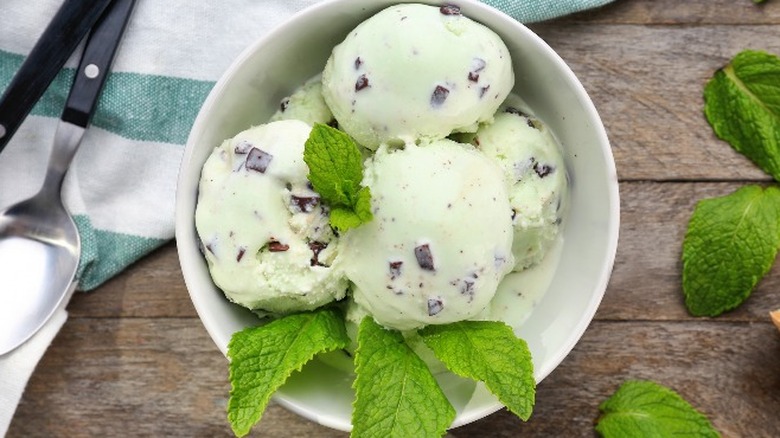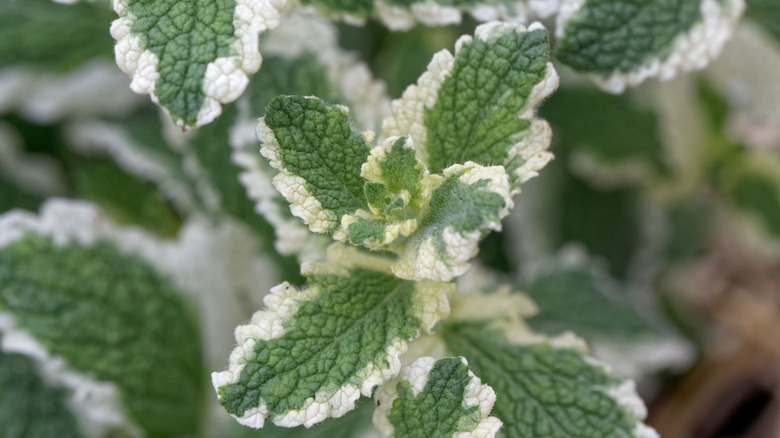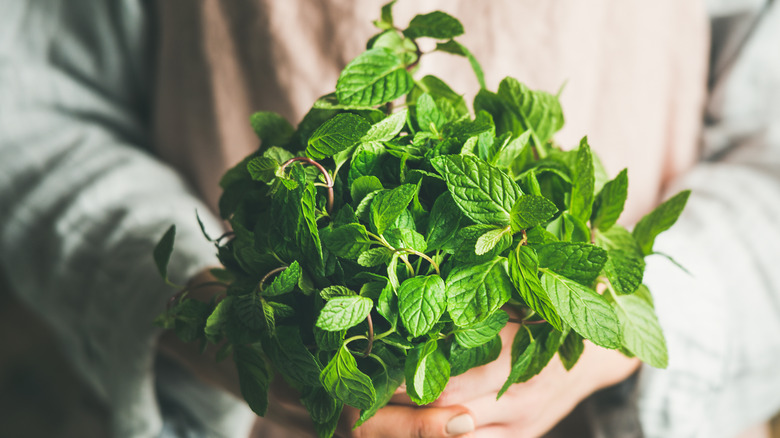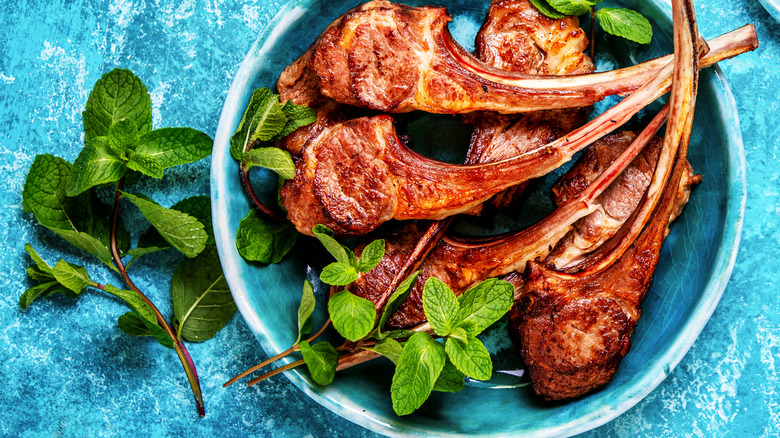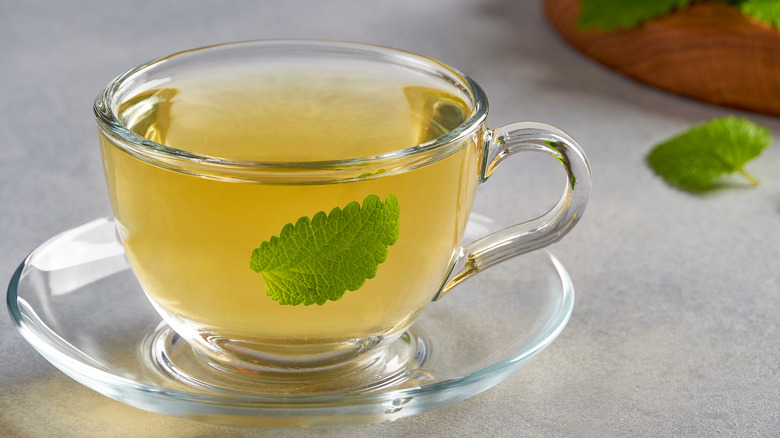What Is Mint And How Can You Use It?
It's common to see products like gum, toothpaste, and chocolates labeled as "mint-flavored" and we don't even give it a second thought. That's a real disservice to mint because this incredible plant and its versatility has many possibilities beyond holiday treats and freshening your breath! It's time to take a closer look at mint.
According to Eater, the name "mint" is derived from Greek mythology, which puts the use and appreciation of mint plants at least as far back as Ancient Greece. The legend says that the God of the underworld, Hades, had an affair with a river nymph named Minthe, and when his wife Persephone discovered the tryst, she turned Minthe into a plain plant. Hades gave Minthe a sweet and attractive scent so that people would love and appreciate her.
For thousands of years, people have turned to mint for its medicinal properties, as well as its intoxicating, refreshing flavor, eventually leading to the creation of products like breath mints and teas that we still use today.
The mint plant
Mint is part of a huge family of plants with the scientific name "Lamiaceae" (per Britannica). This plant family includes thousands of varieties with both decorative and culinary uses, including lavender, basil, oregano, patchouli, bergamot, and rosemary. Burpee notes that some of the characteristics the plants in this family share are square stems, leaves that sit opposite each other, and strong oils that make the plants aromatic.
When trying to identify mint species (there are over 3,200), Garden Guides shares that in addition to the square stems mint leaves will have jagged edges and many mint varieties also have fuzzy-textured leaves. The leaf color can be green, green with a purple edge or underside, or a variegated mix of white and green. Of course, the scent of the plant is a big giveaway, especially when the leaves or stems are crushed. Mint is easy to grow, and can be found globally nearly everywhere the ground doesn't freeze.
The difference between mint and peppermint
As explained by Imperial Sugar, peppermint is a specific variety of mint. Though the differences between peppermint plants and other mint plants may not be apparent by looking at them, there is a difference in the way they taste. Menthol is the compound in mint plants that's responsible for their strong flavor and peppermint has a lot of it — around 40%. The strong aroma and cool, powerful flavor of peppermint is what you'll find in holiday candy canes and Peppermint Patties (per Taste Of Home).
There's no variety of mint plant that's simply named mint, so when products are labeled as "mint" it's meant to be a general description of the flavor. Mint products are often made with spearmint, a less potent member of the plant family. Spearmint contains a compound called carvone, which gives the leaves a sweet and mellow flavor. Per Taste Of Home, there is only a tiny amount of menthol in spearmint compared to peppermint — around .05%. Mint products may be flavored with spearmint alone, or with a blend of spearmint and peppermint such as with mint extract used in baking. It delivers minty flavor, but with a less intense level that you'd get from peppermint extract, which is made with peppermint exclusively.
What does mint taste like?
"Mint" is used to describe the flavor of everything from ice cream to mouthwash, although the taste of mint can be tricky to articulate! Mint typically offers a refreshing, lasting flavor that is cool and sharp, which is most noticeable in fresh mint leaves.
Eater shares that menthol compounds present in mint are the reason we associate the taste of mint with the sensation of cold. Menthol actually tricks and activates receptors in the brain that are responsible for sensing cold, and sticks around on the taste buds to keep that cool sensation going. It's no wonder that advertisements for mint treats, like Peppermint Patties, use imagery of snow and ice to sell them! Menthol also causes a numbing effect in pain receptors in the same way some pain medications do, which is why mint and menthol are used medicinally in products like cough drops and Tiger Balm — because they help soothe that pain.
According to Martha Stewart, the flavor of mint will vary between plants. The amount of menthol will determine how strong the mint is, and some varieties also have hints of other intriguing flavors like fruit or chocolate. Yum.
What are the different varieties of mint?
You may be intrigued to learn that there are at least 19 kinds of mint plants you can grow at home, per Gardening Chores. The most familiar being peppermint, a strongly flavored mint used in candies and chocolates, and spearmint, a more mild version often used in gum and for flavoring food. Amazingly, there are mint plants you can grow that smell and taste like mash-ups with fruit — like banana mint, which can be used in beverages and sweets where the mild flavor of banana can be tasted alongside the mint. There is apple mint, grapefruit mint, and pineapple mint which is pictured above. Try these in teas, fruit salads, and in fish recipes.
Corsican mint has a much different look with tiny, rounded leaves and it grows along the ground instead of upright, making a good bedding or border plant. This variety is used to flavor crème de menthe liquor. The yellow-streaked leaves of ginger mint have a mild ginger flavor and are tasty when crushed and added to popular beverages, like lemonade. There's even a mojito mint, a milder version discovered in Cuba that's perfect for making classic mojito cocktails, according to Grower's Exchange. And perhaps the most intriguing of them all is chocolate mint because this plant really does have the natural aroma and flavor of chocolate blended with mint!
Here's where to find mint
Ready to get some mint? Head to your grocery store, where you can find fresh mint in the produce aisle. There should be a section for fresh herbs where you might find bunches of fresh mint held together with a rubber band or plastic clamshell boxes holding a few stems. You can also find fresh mint for sale at farmer's markets and produce stands. Epicurious advises to choose mint with leaves that look lively, bright green, and hydrated — avoiding those that are wilting, discolored, or with brown spots. Once home, store the herb in the fridge with the stems set in a cup of water and a plastic bag over the top. This should keep the mint fresh for several days. You can also freeze fresh mint in a sealed, freezer-proof bag. For the longest storage, bottles of dried, crushed mint leaves can be found in the spice aisle, although the herb is much less potent when dried.
If you have a sunny window, it's easy to grow mint in a pot as part of a kitchen herb garden. Keep it watered and snip leaves as needed. Mint will also thrive in an outdoor garden, returning every year in most climates, however, it can also overrun a garden quickly if not kept in check.
Gardening Know How says mint can be harvested throughout the growing season.
How to use mint
Mint is revered for flavoring candies, baked treats, and chocolate recipes, however, mint is also a traditional ingredient in many savory dishes. You may have heard of pairing mint jelly with lamb chops or other lamb recipes. The Kitchn shares dozens of recipes that include chopped, fresh mint — like in the bulgur salad tabbouleh and in authentic Greek tzatziki sauce. Blend mint into a pesto sauce to pair with chicken, or grill fresh leaves with halloumi cheese and flatbread for the Turkish street food gozleme. In a recipe from "The Silver Palate" cookbook for Creamy Pasta Sauce with Fresh Herbs, shared by ckbk, fresh mint is chopped with basil, parsley, and chives, creating an unbelievably vibrant flavor.
Mint leaves can be muddled to make classic cocktails like mint juleps and mojitos, or use the leaves fresh or dried to brew herbal tea. Epicurious likes mint blended with mango and pineapple for a uniquely refreshing smoothie. You can also purchase bottles of mint extract to add a dash of flavor to recipes, especially baked goods. Mint leaves can even be used to freshen the air by adding them to potpourri blends or sachet bags, or by planting mint near doorways and windows.
Nutritional information about mint
According to Garden Guides, mint has been valued for thousands of years not only for its lovely scent and refreshing flavor, but for its medicinal value and health benefits. It has long been a popular remedy for stomach pains and indigestion, and was even used in dried form to help whiten teeth. Eater reports that the reason mint feels cooling and soothing is because of the menthol compounds present in the plant. Menthol reduces pain and also tricks the brain into feeling the sensation of cold. In addition to relieving stomach discomfort with mint, it's a valuable ingredient in medicines to treat coughs and sore throats. Healthline reports that the aroma of mint from fresh leaves or essential oils can improve brain function and alertness, and can also help reduce anxiety and stress.
Per Healthline, a serving of 1/3 cup of mint leaves has only 6 calories and 1 gram of fiber. It contains 12% of the recommended daily intake (RDI) of Vitamin A, which is vital for eye health, 9% of the RDI for iron, and 8% of the RDI for manganese. Mint also has high levels of cell-protecting antioxidants. Though mint is often enjoyed in smaller quantities, it's easy to incorporate the herb into meals and drinks throughout the day to get the most of the nutritional benefits.
